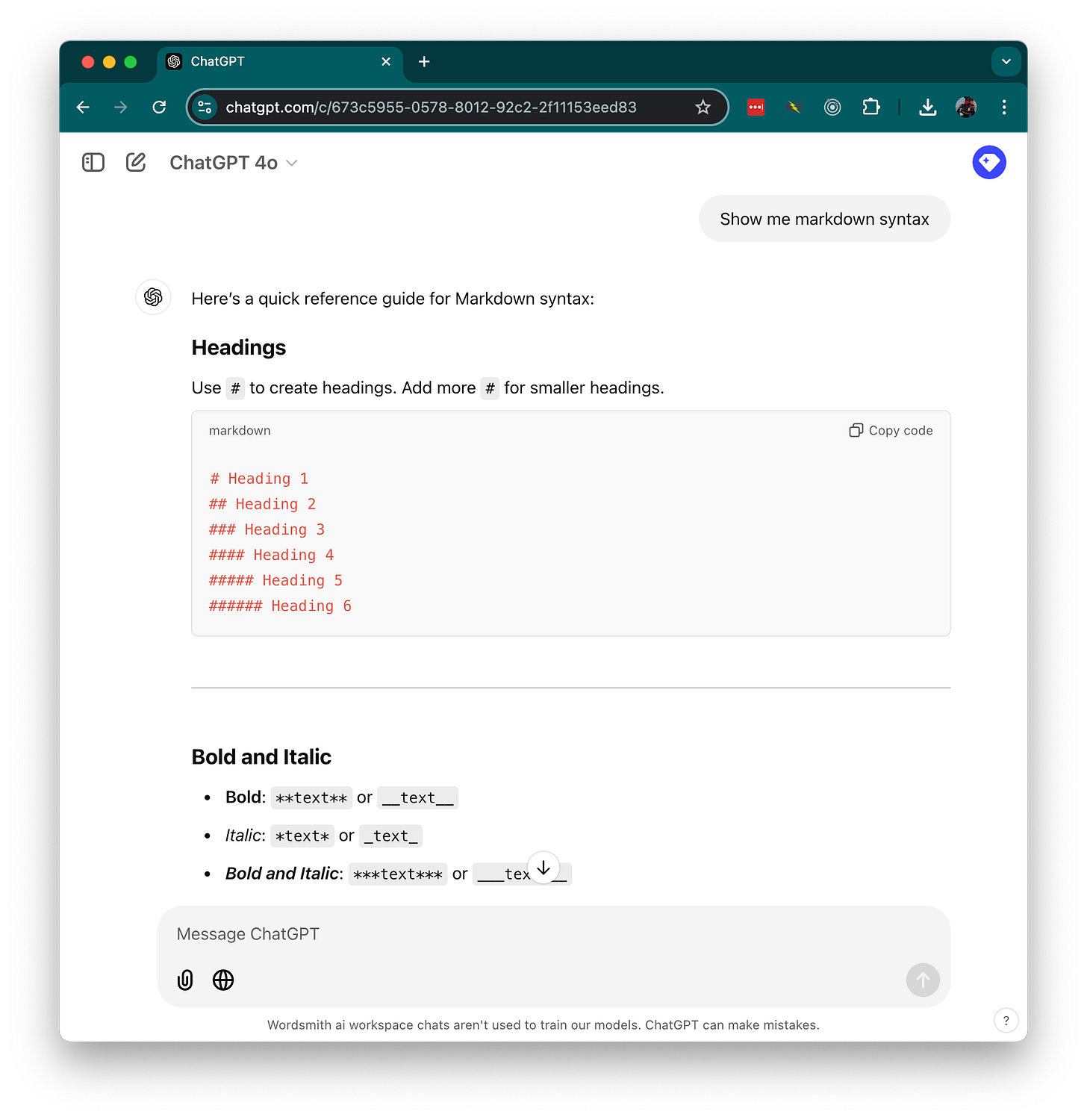In most cases AI interacts with the world through plain text. This means, when reading Word documents or PDFs, it doesn’t inherently understand visual formatting like bold text, headers, or tables. And the answers AI provides are in plain text too. Yet the output you receive often looks clean and well-structured. How is this possible?
The secret lies in Markdown, a lightweight markup language that AI not only understands but excels at both reading and writing. Let’s dive into how Markdown shapes the way AI communicates and how mastering it can enhance your interactions with AI tools.
What Is Markdown?
Markdown was introduced in 2004 by John Gruber as a simple way to create web pages. At the time, HTML was the dominant markup language for web content, but it was cumbersome, verbose, and difficult to work with for casual users. Markdown addressed these challenges by offering a clean and intuitive syntax for formatting based on plain text.
Markdown is very simple to both read and write; for example, the following markdown:
# This is a Header
- This is a **list item**
- [This is a link](https://example.com)
Will be displayed as:
This is a Header
This is a list item
Markdown became very popular among developers and bloggers for its simplicity and readability. But with the rise of AI, it has become the de facto standard for structuring text. Its simplicity allows both humans and AI to understand content and its structure effortlessly.
Pro Tip: You can ask ChatGPT to show you Markdown syntax and help you learn it!
How Markdown Can Help You?
Understanding Markdown is a powerful skill when working with AI. It can improve both the input you provide to AI and the answers it generates for you and can make your prompting much more efficient.
Structuring Your Input for AI
By using Markdown in your input, you can make your prompts more readable and help AI understand the structure of your request. It is especially helpful when you have complex structures in your document, like tables or nested lists, and you want AI to understand this structure to provide you with a good answer.
Here is an example; if you have a Word doc like this:
ChatGPT will not be able to answer the question about what sections you need to pay extra attention to — as it won’t see which items are highlighted in bold.
But if you present the same text as markdown, AI will understand:
Pro Tip: You can use tools like Word2MD (or Wordsmith) to convert Word documents, PDFs, or other content into Markdown for seamless interaction with AI. However good legal AI products will handle this conversion for you automatically under the hood!
Getting Well Formatted Answers
You can also steer AI to format the answer in the way you want by asking it to use specific markdown features, like tables, lists, etc. You can even get embedded images in the answer:
Markdown is a simple yet powerful tool that bridges the gap between humans and AI, enhancing how we communicate and structure information. By mastering Markdown, you can craft clearer prompts for AI and receive well-structured, readable responses. Dive into Markdown today and elevate your AI-powered workflows to the next level!






